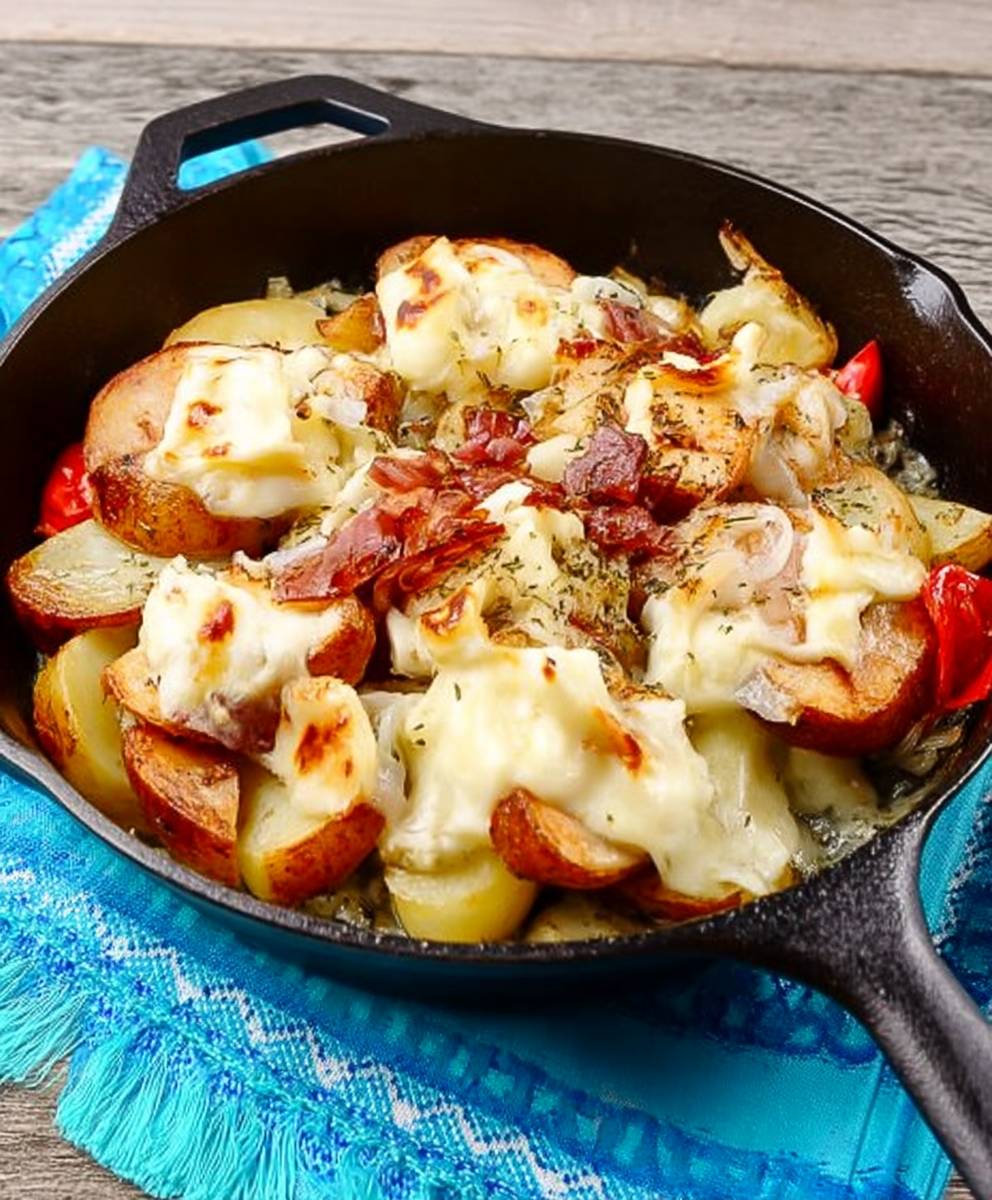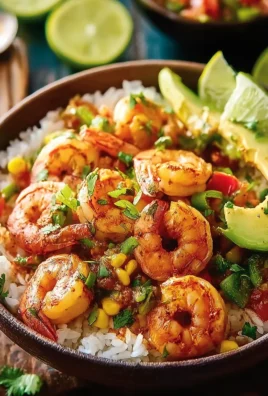Eastern European Skillet: Prepare to embark on a culinary journey to the heart of Eastern Europe, right from the comfort of your own kitchen! Imagine a symphony of savory flavors dancing on your palate tender kielbasa, hearty potatoes, sweet peppers, and tangy sauerkraut, all harmoniously combined in one satisfying dish. This isn’t just a meal; it’s an experience.
This humble yet deeply flavorful dish draws inspiration from the rustic kitchens of Poland, Germany, and other Eastern European countries, where resourceful cooks have long celebrated simple, wholesome ingredients. Rooted in traditions of hearty peasant fare, the Eastern European Skillet represents a celebration of community and shared meals. It’s the kind of dish that warms you from the inside out, perfect for chilly evenings or a comforting weekend brunch.
What makes this skillet so irresistible? It’s the perfect balance of textures and tastes. The smoky kielbasa provides a rich, meaty base, while the potatoes offer a comforting, earthy sweetness. The peppers add a touch of vibrant freshness, and the sauerkraut lends a delightful tang that cuts through the richness. Best of all, it’s incredibly easy to prepare, making it a weeknight winner for busy families. So, gather your ingredients, fire up your skillet, and let’s create a taste of Eastern Europe together!
Ingredients:
- 1 pound smoked kielbasa sausage, sliced into 1/4-inch thick rounds
- 1 large onion, chopped
- 2 cloves garlic, minced
- 1 red bell pepper, chopped
- 1 green bell pepper, chopped
- 1 (14.5 ounce) can diced tomatoes, undrained
- 1 (15 ounce) can sauerkraut, rinsed and drained
- 1 pound potatoes, peeled and cubed (about 1/2 inch cubes)
- 1 cup chicken broth
- 1 tablespoon olive oil
- 1 teaspoon paprika
- 1/2 teaspoon caraway seeds
- 1/4 teaspoon black pepper
- Salt to taste
- Optional: Fresh parsley, chopped, for garnish
- Optional: Sour cream, for serving
Preparing the Vegetables and Sausage
- First, let’s get our vegetables prepped. Start by chopping the onion. I like a medium dice for this, about 1/2 inch. Don’t worry about being perfect, just aim for roughly the same size pieces so they cook evenly.
- Next, mince the garlic. You can use a garlic press if you have one, or just finely chop it with a knife. Mincing the garlic releases its flavor, which is what we want.
- Now, let’s tackle the bell peppers. Remove the stems and seeds from both the red and green bell peppers. Then, chop them into roughly 1/2-inch pieces, similar to the onion. The color contrast of the red and green peppers will make the final dish look so appealing!
- Peel the potatoes and cut them into 1/2-inch cubes. Make sure they are relatively uniform in size so they cook evenly. If the cubes are too large, they’ll take longer to cook, and if they’re too small, they might fall apart.
- Rinse and drain the sauerkraut really well. This is important because sauerkraut can be quite sour, and rinsing it helps to mellow out the flavor. Squeeze out any excess liquid after rinsing.
- Finally, slice the kielbasa sausage into 1/4-inch thick rounds. I prefer to slice it on a slight diagonal for a more visually appealing presentation, but that’s totally optional!
Cooking the Skillet
- Heat the olive oil in a large skillet or Dutch oven over medium heat. Make sure the skillet is large enough to accommodate all the ingredients. A 12-inch skillet works well.
- Add the sliced kielbasa to the skillet and cook until browned on both sides, about 5-7 minutes. The sausage will release some of its flavorful oils, which will help to flavor the rest of the dish. Don’t overcrowd the skillet; if necessary, cook the sausage in batches.
- Remove the sausage from the skillet and set aside. Leave the rendered fat in the skillet that’s where all the good flavor is!
- Add the chopped onion to the skillet and cook until softened and translucent, about 5 minutes. Stir occasionally to prevent burning. The onions should be nice and fragrant.
- Add the minced garlic and cook for another minute, until fragrant. Be careful not to burn the garlic, as it can become bitter.
- Add the chopped bell peppers to the skillet and cook until slightly softened, about 5 minutes. The peppers should still have a little bit of a bite to them.
- Add the cubed potatoes to the skillet and cook for about 5 minutes, stirring occasionally, until they start to brown slightly. This step helps to develop their flavor and prevents them from becoming mushy later on.
- Pour in the chicken broth, scraping up any browned bits from the bottom of the skillet. These browned bits, called fond, are packed with flavor and will add depth to the dish.
- Add the diced tomatoes (undrained), sauerkraut, paprika, caraway seeds, and black pepper to the skillet. Stir well to combine all the ingredients.
- Return the browned kielbasa to the skillet.
- Bring the mixture to a simmer, then reduce the heat to low, cover the skillet, and cook for 20-25 minutes, or until the potatoes are tender. Stir occasionally to prevent sticking. The cooking time may vary depending on the size of the potato cubes.
- Check the potatoes for doneness by piercing them with a fork. They should be easily pierced with little resistance. If the potatoes are still firm, continue cooking for a few more minutes.
- Taste and adjust the seasoning with salt as needed. Remember that the sauerkraut and kielbasa are already salty, so you may not need to add much salt.
Serving
- Remove the skillet from the heat and let it rest for a few minutes before serving. This allows the flavors to meld together even more.
- Serve the Eastern European Skillet hot, garnished with fresh parsley, if desired. A dollop of sour cream on top adds a nice creamy tang that complements the savory flavors of the dish.
- This dish is hearty and satisfying on its own, but you can also serve it with a side of crusty bread for soaking up the delicious sauce.
Tips and Variations:
- Spice it up: Add a pinch of red pepper flakes or a dash of hot sauce for a little extra heat.
- Add other vegetables: Feel free to add other vegetables like carrots, celery, or mushrooms to the skillet.
- Use different sausage: If you don’t have kielbasa, you can use other types of smoked sausage, such as andouille or chorizo.
- Make it vegetarian: Omit the sausage and add a can of drained and rinsed chickpeas or white beans for a vegetarian version.
- Slow cooker option: This recipe can also be made in a slow cooker. Simply combine all the ingredients in the slow cooker and cook on low for 6-8 hours or on high for 3-4 hours.
- Storage: Leftovers can be stored in an airtight container in the refrigerator for up to 3 days. Reheat gently on the stovetop or in the microwave.
Enjoy!
This Eastern European Skillet is a flavorful and comforting dish that’s perfect for a weeknight meal. The combination of smoked sausage, sauerkraut, potatoes, and vegetables is hearty and satisfying, and the paprika and caraway seeds add a touch of warmth and spice. I hope you enjoy making and eating this delicious dish as much as I do!

Conclusion:
This Eastern European Skillet is more than just a meal; it’s a warm hug on a plate, a taste of tradition, and a guaranteed crowd-pleaser. I truly believe this recipe deserves a spot in your regular rotation. The combination of savory kielbasa, tender potatoes, sweet cabbage, and tangy sauerkraut creates a symphony of flavors that’s both comforting and exciting. It’s hearty enough to satisfy even the biggest appetites, yet simple enough to whip up on a busy weeknight.
Why is it a must-try? Because it’s incredibly versatile! You can easily adapt it to your own preferences and dietary needs. Not a fan of kielbasa? Swap it out for smoked sausage, chorizo, or even a plant-based alternative. Want to add more vegetables? Bell peppers, onions, and carrots would all be delicious additions. The possibilities are endless!
Serving Suggestions and Variations:
For a complete meal, I love serving this skillet with a dollop of sour cream or Greek yogurt and a sprinkle of fresh dill or parsley. A side of crusty bread is also perfect for soaking up all those delicious juices. If you’re looking to add a little heat, a dash of hot sauce or a pinch of red pepper flakes will do the trick.
Here are a few variations to get you started:
* Spicy Skillet: Add a diced jalapeño or a pinch of cayenne pepper to the skillet while cooking the vegetables.
* Vegetarian Skillet: Omit the kielbasa and add more vegetables, such as mushrooms, zucchini, or eggplant. You can also add a can of drained and rinsed chickpeas or white beans for extra protein.
* Cheesy Skillet: Sprinkle shredded cheese, such as cheddar, mozzarella, or provolone, over the skillet during the last few minutes of cooking.
* Deluxe Skillet: Top the skillet with a fried egg for a truly decadent meal.
But honestly, the best part about this Eastern European Skillet is how forgiving it is. Don’t be afraid to experiment and make it your own! Use what you have on hand, adjust the seasonings to your liking, and have fun with it.
I’m confident that you’ll love this recipe as much as I do. It’s a simple, satisfying, and flavorful dish that’s perfect for any occasion. Whether you’re cooking for yourself, your family, or a crowd, this skillet is sure to be a hit.
So, what are you waiting for? Grab your skillet, gather your ingredients, and get cooking! I can’t wait to hear what you think. Please, try this recipe and don’t hesitate to share your experience in the comments below. Let me know what variations you tried, what you loved, and what you would change. Your feedback is invaluable, and I’m always looking for new ways to improve my recipes. Happy cooking! I hope you enjoy this taste of Eastern Europe as much as I do.
Eastern European Skillet: A Delicious and Easy One-Pan Recipe
Hearty Eastern European skillet with kielbasa, sauerkraut, potatoes, and vegetables. A comforting one-pan meal perfect for weeknights.
Ingredients
- 1 pound smoked kielbasa sausage, sliced into 1/4-inch thick rounds
- 1 large onion, chopped
- 2 cloves garlic, minced
- 1 red bell pepper, chopped
- 1 green bell pepper, chopped
- 1 (14.5 ounce) can diced tomatoes, undrained
- 1 (15 ounce) can sauerkraut, rinsed and drained
- 1 pound potatoes, peeled and cubed (about 1/2 inch cubes)
- 1 cup chicken broth
- 1 tablespoon olive oil
- 1 teaspoon paprika
- 1/2 teaspoon caraway seeds
- 1/4 teaspoon black pepper
- Salt to taste
- Optional: Fresh parsley, chopped, for garnish
- Optional: Sour cream, for serving
Instructions
- Prepare Vegetables and Sausage: Chop onion, mince garlic, chop bell peppers, peel and cube potatoes, rinse and drain sauerkraut, and slice kielbasa.
- Brown Sausage: Heat olive oil in a large skillet or Dutch oven over medium heat. Add kielbasa and cook until browned on both sides (5-7 minutes). Remove sausage and set aside, leaving rendered fat in the skillet.
- Sauté Vegetables: Add onion to the skillet and cook until softened (5 minutes). Add garlic and cook until fragrant (1 minute). Add bell peppers and cook until slightly softened (5 minutes). Add potatoes and cook until slightly browned (5 minutes).
- Simmer: Pour in chicken broth, scraping up any browned bits. Add diced tomatoes (undrained), sauerkraut, paprika, caraway seeds, and black pepper. Stir well.
- Combine and Cook: Return the browned kielbasa to the skillet. Bring to a simmer, then reduce heat to low, cover, and cook for 20-25 minutes, or until potatoes are tender. Stir occasionally.
- Season and Serve: Check potatoes for doneness. Taste and adjust seasoning with salt as needed. Remove from heat and let rest for a few minutes. Serve hot, garnished with fresh parsley and a dollop of sour cream, if desired.
Notes
- Spice it up: Add a pinch of red pepper flakes or a dash of hot sauce for a little extra heat.
- Add other vegetables: Feel free to add other vegetables like carrots, celery, or mushrooms to the skillet.
- Use different sausage: If you don’t have kielbasa, you can use other types of smoked sausage, such as andouille or chorizo.
- Make it vegetarian: Omit the sausage and add a can of drained and rinsed chickpeas or white beans for a vegetarian version.
- Slow cooker option: This recipe can also be made in a slow cooker. Simply combine all the ingredients in the slow cooker and cook on low for 6-8 hours or on high for 3-4 hours.
- Storage: Leftovers can be stored in an airtight container in the refrigerator for up to 3 days. Reheat gently on the stovetop or in the microwave.






Leave a Comment